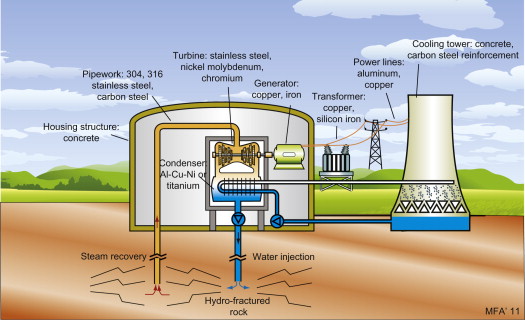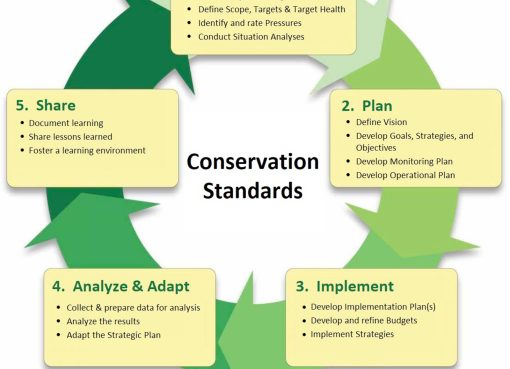Powering the Future: The Economic Advantages of Geothermal Power

Geothermal power offers a sustainable and renewable source of energy that harnesses the natural heat stored beneath the Earth’s surface. Unlike traditional fossil fuels, geothermal energy produces minimal greenhouse gas emissions and has the potential to significantly reduce our reliance on non-renewable resources.
How Geothermal Energy Works
Harnessing Earth’s Heat
Geothermal power plants utilize the Earth’s internal heat to generate electricity. This heat originates from the decay of radioactive materials deep within the Earth’s core. In areas where this heat is close enough to the surface, it can be harnessed for various applications, including electricity generation.
Geothermal Reservoirs
Geothermal reservoirs are underground pockets of steam, hot water, or hot rock that contain vast amounts of heat energy. Wells drilled into these reservoirs allow the hot water or steam to be brought to the surface, where it can be used to power turbines and generate electricity.
Geothermal Power Plants
There are three main types of geothermal power plants: dry steam, flash steam, and binary cycle. Dry steam plants use steam directly from the reservoir to drive turbines. Flash steam plants use high-pressure hot water from the reservoir, which is flashed into steam to drive turbines. Binary cycle plants use moderate-temperature water from the reservoir to heat a separate fluid with a lower boiling point, such as isobutane or isopentane, which then vaporizes to drive turbines.
Environmental Benefits of Geothermal Power
Reduced Greenhouse Gas Emissions
One of the most significant advantages of geothermal power is its minimal environmental impact. Unlike fossil fuels, which release carbon dioxide and other pollutants when burned, geothermal energy produces virtually no greenhouse gas emissions during operation.
Minimal Land Use
Geothermal power plants have a small physical footprint compared to other forms of energy generation, such as coal or solar. This minimal land use reduces habitat destruction and land degradation associated with large-scale energy projects.
Sustainable Resource
Geothermal energy is a renewable resource, meaning it can be replenished naturally over time. With proper management, geothermal reservoirs can provide a continuous and reliable source of clean energy for generations to come.
Economic Advantages of Geothermal Energy
Cost-Competitive Energy Source
While the initial investment costs for geothermal power plants can be significant, the long-term operational costs are relatively low compared to fossil fuels. Once a geothermal power plant is built, the fuel (heat from the Earth) is free, making geothermal energy a cost-competitive option for electricity generation.
Job Creation
The development and operation of geothermal power plants create jobs in various sectors, including engineering, construction, and maintenance. Additionally, the local economy benefits from increased investment and tax revenue generated by geothermal projects.
Energy Security
Geothermal energy provides a reliable source of baseload power, meaning it can operate continuously to meet the minimum electricity demand. This helps reduce dependence on imported fossil fuels and enhances energy security for countries with significant geothermal resources.
Geothermal Power Around the World
Leading Countries in Geothermal Energy Production
Countries like the United States, Philippines, Indonesia, and Iceland are among the leaders in geothermal energy production. These nations have favourable geological conditions and significant investments in geothermal infrastructure.
Emerging Markets
Other regions, such as East Africa and Latin America, are emerging as promising markets for geothermal energy development. These areas possess untapped geothermal potential and are actively exploring opportunities to harness this renewable resource.
Challenges and Limitations of Geothermal Power
Location Dependency
Geothermal resources are concentrated in specific regions with favourable geological conditions, limiting widespread adoption. Areas with high geothermal potential may also be located in remote or environmentally sensitive locations, posing logistical challenges for development.
Initial Investment Costs
The upfront costs of drilling wells and building geothermal power plants can be prohibitive, particularly for developing countries or regions without access to sufficient capital. Financing mechanisms and government incentives are essential for overcoming this barrier to entry.
Technical Challenges
Geothermal energy extraction involves complex engineering processes, including drilling, reservoir management, and fluid handling. Technical challenges such as corrosion, scaling, and reservoir depletion can affect the efficiency and longevity of geothermal power plants.
Future Prospects and Innovations in Geothermal Energy
Enhanced Geothermal Systems
Enhanced geothermal systems (EGS) involve engineering techniques to create or improve geothermal reservoirs where natural heat exchange is insufficient. EGS technologies have the potential to expand geothermal energy production to regions previously considered unsuitable.
Direct Use Applications
In addition to electricity generation, geothermal energy can be used directly for heating and cooling applications. District heating systems, greenhouses, and industrial processes can benefit from the consistent and reliable heat provided by geothermal resources.
Conclusion
Geothermal power offers a promising solution to the global challenges of climate change, energy security, and economic development. By harnessing the Earth’s natural heat, we can transition towards a more sustainable energy future while reducing our reliance on fossil fuels.



Leave a Comment